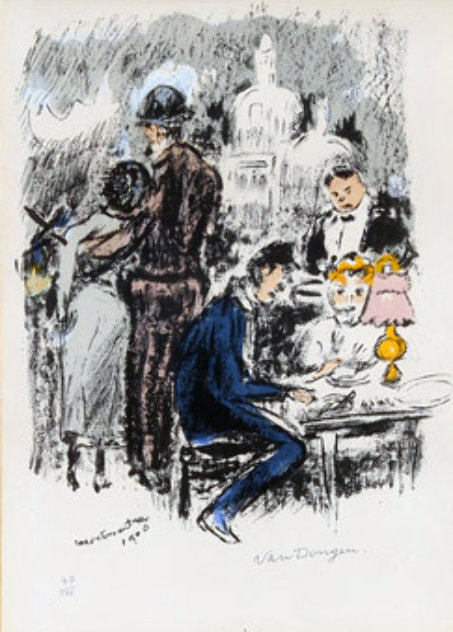


"Marcelle Leoni" Galerie Des Ponchettes Poster 1959 HS
Kees Van Dongen
Limited Edition Print : Lithographic Poster
Size : 18.39x15.35 in | 47x39 cm
Edition : Not Numbered
Reduced
-
🔥Rare 1959 Hand Signed Lithograph Poster $$$$$$$
Year1959
Hand SignedLower Right in Blue Ink and Dedicated “a Monsieur J Liverant"
Condition Other - small tear lower left edge, 3 micro tears top left edge
Not Framed
Purchased fromAuction House 2022
Provenance / HistoryThe Joseph Liverant Estate, Ottawa, Canada. Joseph Liverant fled from Germany to take up residence in Canada at the time of the Second World War. After the war he purchased a residence in Beaulieu-sur-Mer close to St Paul de Vence where Marc Chagall lived. He and the artist became good friends, and their warm relationship is evident in the numerous extant dedications on Lithographs, posters and books. After Joseph’s death the estate finally passed to his stepson, Felix Quinet who donated many works to The National Gallery of Canada. Upon his passing there was an Estate sale from which this item comes. It was sold together with numerous other works by Chagall many of which were dedicated to Joseph Liverant. This Van Dongen poster came from the same source. Doubtless with his association with Chagall Liverant met Van Dongen.
Story / Additional InfoKees Van Dongen (1877 - 1968). Title: “Marcelle Leoni“ Galerie Des Ponchettes (s.9584). Medium: Lithographic poster, 1959, Size: 39 x 46,7 cm. References: Juffermans, p. 174. Edition: Unknown size. Notes: This was made for an exhibition of the artists works at the Galerie des Ponchettes, January/March 1959. Printed by: Mourlot Freres, Paris, France.
Certificate of AuthenticityArt Brokerage
LID156174
Kees Van Dongen - Netherlands
Art Brokerage: Kees Van Dongen Dutch Artist: b. 1877-1968. Born in the Netherlands, Dutch artist Kees van Dongen attended the Royal Academy of Arts in Rotterdam, and moved to Paris in 1897. He lived in the Montmartre district and worked as a house painter and illustrator for satirical magazines. He met Henri Matisse in the first years in Paris, and adopted the Fauve style of painting in bright colors and broad strokes. He exhibited with the Fauves in their famous 1905 exhibition. Van Dongen's paintings of women, dancers and nudes are composed of rich vivid colors and bold outlines. The simplified forms and emotional distortions were used to express his passionate involvement with contemporary life in Paris. In 1908, Van Dongen was invited to join the German Expressionist group Die Brucke, and his expressionist portraits were extremely popular throughout continental Europe through the war years. After 1918 van Dongen became a popular society painter. His style became simpler and more realistic, although he continued to use vivid colors in his portraits. Listings wanted.







































